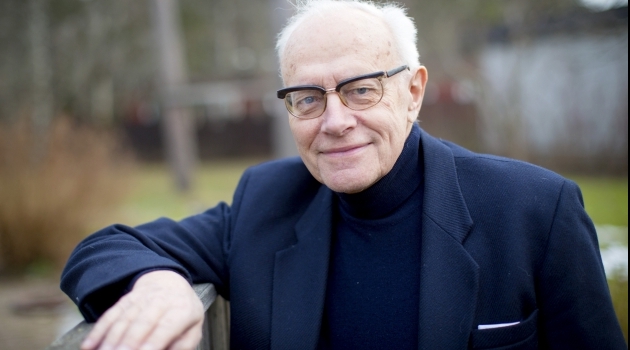The pregnancy test that changed everything
Leif Wide's immunological pregnancy test was revolutionary. It was fast, reliable and simple to carry out. It was followed by a number of innovations which led to a very successful company in Uppsala.
The Björkén Prize is Uppsala University's foremost scientific award. This year's prize was awarded to Leif Wide, emeritus professor in the Department of Medical Sciences.
Leif Wide's discoveries include hyper-sensitive so-called sandwich tests and he was also involved in the discovery of immunoglobulin E. The company Pharmacia Diagnostics was based on Leif Wide's discoveries and is still a leader within the area of allergy tests, now under the name of Thermo Fisher Scientific.
But Leif Wide is also known for having developed the first non-biological pregnancy test, from which allergy tests gradually grew. He developed the test during his time as a medical student. The test represented a paradigm shift within gynaecology.
There is probably no other diagnostic issue which has been of so much interest to humanity as that of pregnancy. Folklore had it that the ancient Egyptians had such a test. It involved watering wheat grains with the woman's urine. If the woman was pregnant, the wheat grains sprouted more quickly than normal. When researchers in the 1930s investigated the method, it turned out to have a reliability of 75-85%!
Since that time, many methods have been suggested and used. A monograph from 1948 listed 200 different tests. Some involved provoking morning sickness in women, others injecting urine from women into animals, dissecting the animals and studying the changes in the animals' ovaries.
Leif Wide's immunological pregnancy test gave an accurate answer from a week after a missed period. He demonstrated a few years later that with a more sensitive test it would be possible to get the answer as early as six days before a missed period. Tests that arrived on the market later confirm this. It can seem fantastic, but in fact it's actually rather problematic.
The reason is that a fertilised egg doesn't always lead to a full-term pregnancy. The body rejects fertilised eggs which have been implanted but which for various reasons are not viable.
‘A positive test six days after a missed period gives an 84% chance that the woman will give birth to a live child. A positive test six days before the period only gives a 45% chance.’
But there are many circumstances which make earlier tests a valuable tool.
‘It can be because the woman is about to undergo an X-ray investigation, cytostatic treatment or receive other medicines. Then it's essential to know if there could be a pregnancy which could be jeopardised.’
Leif Wide's test gave a result within a few hours, had a reliability of 99.8% from a week after a missed period and was easy to administer.
‘There was a great deal of interest from the smaller actors’, says Leif Wide. ‘The test meant that private gynaecologists and ante-natal units could provide a rapid diagnosis in their clinics. Women could also carry out the pregnancy tests in their own homes.’
In hospitals, the test made it possible for the first time to measure the amount of pregnancy hormone in the urine and to diagnose, for example, possible miscarriages and tumours which increase levels of the hormone.
Kim Bergström
---
The Björkén Prize
The prize of 300,000 SEK is awarded by Uppsala University to outstanding researchers within the theoretical branches of science and medicine. The justification reads:
‘Leif Wide receives the prize for his many pioneering discoveries, including world-leading methods within allergy diagnosis and modern pregnancy testing. Leif Wide's research has led to enormous breakthroughs within healthcare, and in society as a whole.’
---
Leif Wide's discoveries
- The first non-biological pregnancy test, which measured the hormone directly in the urine using hCG antibodies.
- The discovery, together with his colleagues Gunnar Johansson and Hans Bennich, of immunoglobulin E, which has great significance for our immune system,
- The development of hyper-sensitive allergy tests, so-called sandwich tests, for immune detection, which became decisive in the commercialisation of the discovery.
- Techniques for discovering protein heterogeneity, which have been used in areas such as tracing doping with protein-based drugs.
---
Timeline:
1930s: Pregnancy determined through methods such as injecting urine from women into various laboratory animals. The principle was that the hormone human chorionic gonadotropin (hCG) in the urine affected the laboratory animals in different ways.
1960s: The first non-biological pregnancy test, which measured the hormone directly in the urine using hCG antibodies. Pregnancy could be demonstrated after 60-90 minutes with 99.8% certainty a week after a missed period. As early as 1961 the method was introduced into routine healthcare at Uppsala University Hospital.
1980s: More sensitive immunological pregnancy tests were introduced and in the 1980s and 1990s the global market for reagent kits grew extremely quickly, becoming a major industry.

